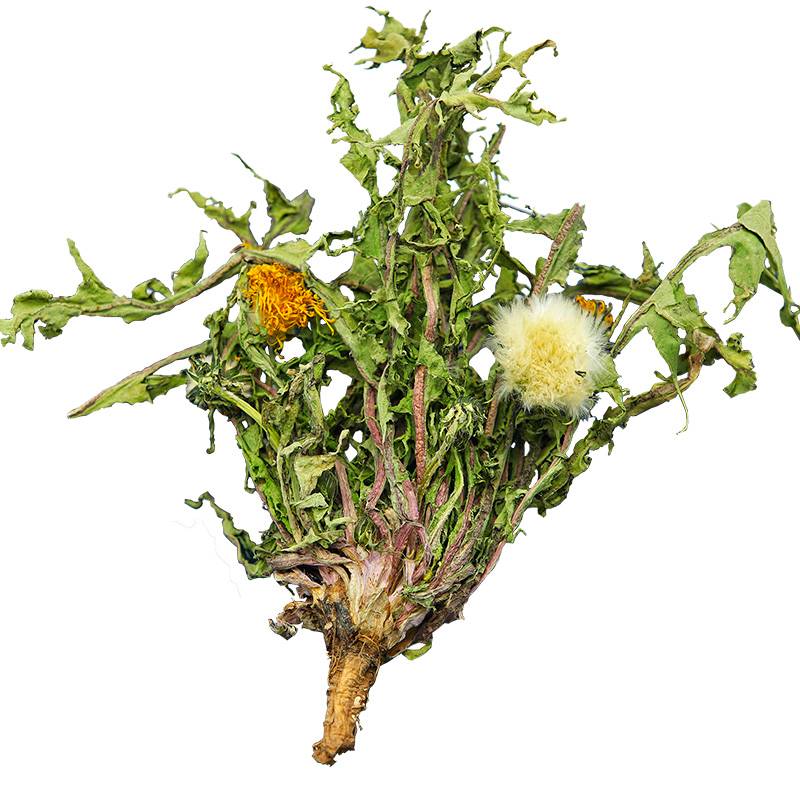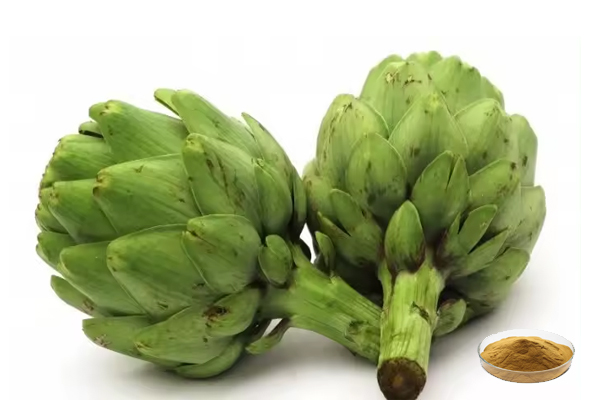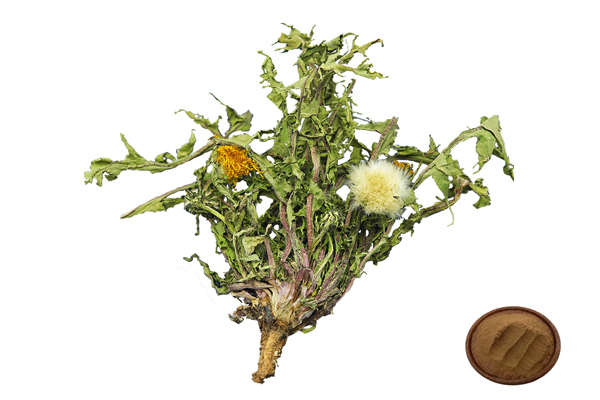Poudre d’extrait de racine de pissenlit 10:1
Source: racine de pissenlit
Nom Latin :Taraxacum mongolicum Hand.-Mazz.
Ingrédients actifs: flavonoïdes, acides phénoliques, triterpènes, Polysaccharides
Spécification :10:1
Méthode d’essai :TLC
Apparence: brun jaune poudre Fine
Résidu de Pesticide: conforme à la norme (ce) No 396/2005
- Description Description
- Fiche technique
- Certificat de formation
-
Qu’est-ce que la poudre d’extrait de racine de pissenlit?
La poudre d’extrait de racine de pissenlit est une poudre brune obtenue par l’extraction, la purification et le séchage par pulvérisation des racines séchées de pissenlit, de pissenlit alcalin ou de plusieurs espèces du même genre de la famille des Asteraceae.
Dandelion extract contains a variety of active ingredients, especially high levels of caffeic acid and chlorogenic acid. It has broad-spectrum antibacterial, choleretic hepatoprotective, anti-endotoxin, stomachic and immune-boosting effects, and is used in the treatment of acute mastitis, lymphadenitis, and urinary tract infections.
La technologie Green Spring fournit de la poudre d’extrait de racine de pissenlit 10:1 par extraction supercritique, qui obtient une poudre active avec des propriétés stables, une bonne fluidité et une finesse.
Fondée en 2000, Green Spring is a leading plant extract technology company in China. It produces according to ISO, HACCP, and other quality standards, and its products implement the highest international industry standards. With 7 certifications and 7 patents, our products are sold in more than 62 countries worldwide, and samples are available for R&D testing.
Spécification:
Nom du produit
Extrait de pissenlit
Nom Latin
Taraxacum mongolicum Hand.-Mazz.
Source:
Racine de pissenlit
Ingrédients actifs
Flavonoïdes, acides phénoliques, triterpènes, Polysaccharides
spécification
10:1
Méthode d’essai
TLC c
apparence
Brun jaune poudre Fine
Résidus de pesticides
Conforme à la norme (ce) n ° 396/2005
Règlement:
Il est conforme à la réglementation de l’ue.
Vous cherchez un devis?Benefits:
Lower Blood Pressure
The polysaccharides, phenolic acids (chicoric acid, chlorogenic acid), terpenes (dandelion sterols), and sesquiterpene lactones active in dandelion extract are known to lower blood sugar. Dandelion chloroform extract can be used as a hypoglycaemic agent for the treatment of type 2 diabetes mellitus by promoting glucose uptake in L6 cells. Hou Liran et al. showed that dandelion polysaccharides had a significant hypoglycaemic effect on tetracosan-induced diabetic mice. Dandelion terpineol has an antidiabetic effect and shows significant effects in reversing insulin resistance, which can be investigated as an insulin resistance reversal agent.
Protection of Cardiomyocytes
Total flavonoids from dandelion extract effectively inhibited apoptosis of cardiomyocytes in mice with viral myocarditis. Wang et al. demonstrated that dandelion sterols had a protective effect on mouse cardiomyocytes (CSC) in a model of ischemia-reperfusion-induced oxidative injury, which could be attributed to the up-regulation of the expression of protein kinase 1/2 to inhibit the oxidative injury of CSC cells caused by I/R.
Anti-inflammatory
Xiao Chiu-yung et al. showed that dandelion extracts TMP (total polysaccharide of dandelion) inhibited the mRNA expression of inflammatory factors (cyclooxygenase-2, tumor necrosis factor-alpha, interleukin-6, and interleukin-1β) in a dose-dependent manner. Wang Qian et al. demonstrated that dandelion polysaccharide has a therapeutic effect on ulcerative colitis, and further clarified that dandelion polysaccharide can inhibit inflammation and protect and repair mucosal tissues by effectively lowering the levels of interleukin-6, interleukin-6 receptor, and glycoprotein 130 (gp130).
Dandelion flavonoids, the main anti-inflammatory component of dandelion, significantly inhibited xylene-induced auricular swelling in mice, egg white-induced foot-plantar swelling in rats, and cotton ball granuloma in rats. Yang Nan et al. demonstrated that organic acids can reduce lipopolysaccharide (LPS)-induced inflammation in bronchial epithelial (NHBE) cells, a function associated with the modulation of the TLR4/IKK/NF-kappa B pathway. WANG SHASHA et al. suggested that dandelion sterols have a potential protective effect against Fuchsin complete adjuvant (FCA)-induced arthritis in rats. In addition, dandelion volatile oil at concentrations of 40 μg-mL-1 and 80 μg-mL-1 had a significant inhibitory effect on the production of nitric oxide (NO) and tumor necrosis factor-α (TNF-α). Some studies have shown that the anti-inflammatory effect of dandelion may also be related to heptaphyllum lactone.
Antibacterial
Dandelion extract has some antibacterial activity against Escherichia coli, Salmonella, and Staphylococcus aureus. The current study shows that the antibacterial effect of dandelion extract is related to flavonoids, phenolic acids, and polysaccharides. Wang Xiaoying The study showed that the total flavonoid extract of dandelion has a significant antibacterial effect on Pseudomonas aeruginosa, and the antibacterial effect is significantly enhanced with the increase in concentration.
Its bacteriostatic mechanism is: to accelerate the destruction of the integrity of the cell membrane, resulting in metal ions, proteins, and saccharides exudation, so that the cell metabolism is disrupted, and ultimately the cell death, plays a bacteriostatic effect. Dandelion polyphenols have certain antibacterial effects on Staphylococcus aureus, Bacillus subtilis, Escherichia coli, and Salmonella, and the antibacterial effects on Staphylococcus aureus and Bacillus subtilis are more obvious.
Applications:
In Cosmetics:
Dandelion extract has antimicrobial properties and is rich in vitamins A, C, E, and K, which protect the skin from free radical damage. It is also incorporated into skin care products for its anti-inflammatory properties. Scientific studies have shown that dandelion leaf and flower extracts help protect human dermal fibroblasts from UVB damage and cellular aging. Dandelion extract powder has been used in cosmetics as a natural ingredient.
For Feed Product:
The dandelion extract can reduce swelling and detoxification, help digestion, and strengthen the spleen and stomach. It enhances appetite, promotes growth, and can prevent a variety of digestive and respiratory diseases, especially porcine streptococcal disease, with remarkable efficacy, and has been used as a feed additive.
For Health Products:
Dandelion root aqueous extract can effectively inhibit the proliferation of human gastric cancer cells, dandelion roots, stems and leaves in the oligofructose have an auxiliary anti-diabetic, anti-rheumatic, anti-inflammatory, and anti-cardiogenic disorder. Dandelion extracts have been used as additives in various health products.
-
Télécharger le document
Poudre d’extrait de racine de pissenlit 101 COA
-
Télécharger le document
Cosmos 2023
Télécharger le documentHalal 2023
Télécharger le documentCasher 2023


 Anglais
Anglais français
français espagnol
espagnol russe
russe coréen
coréen japonais
japonais













